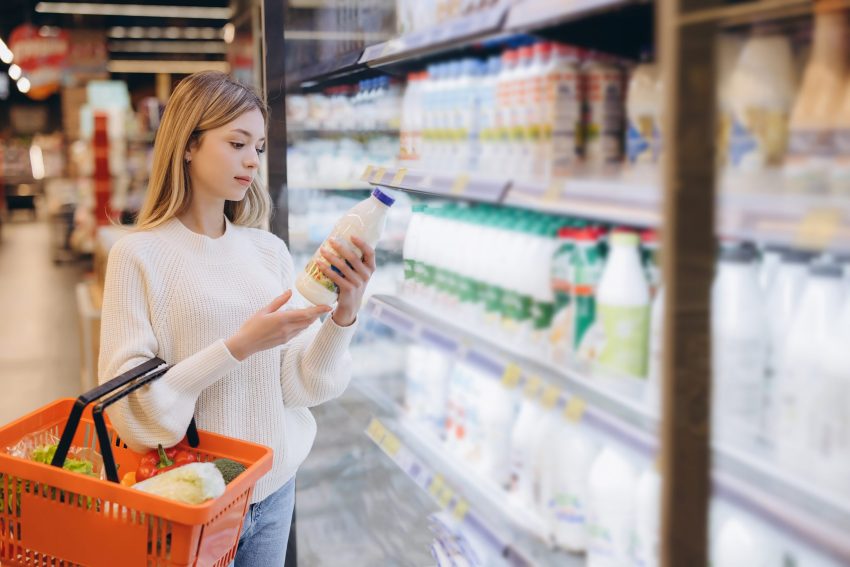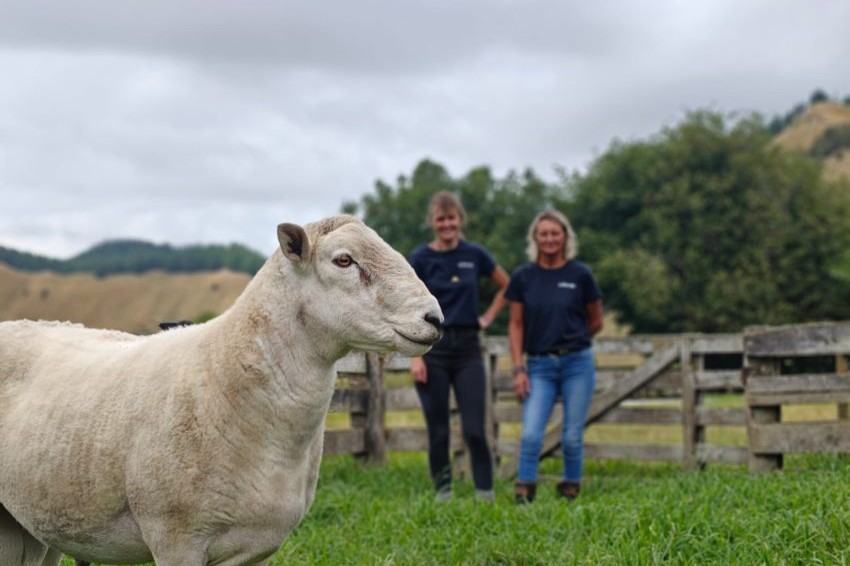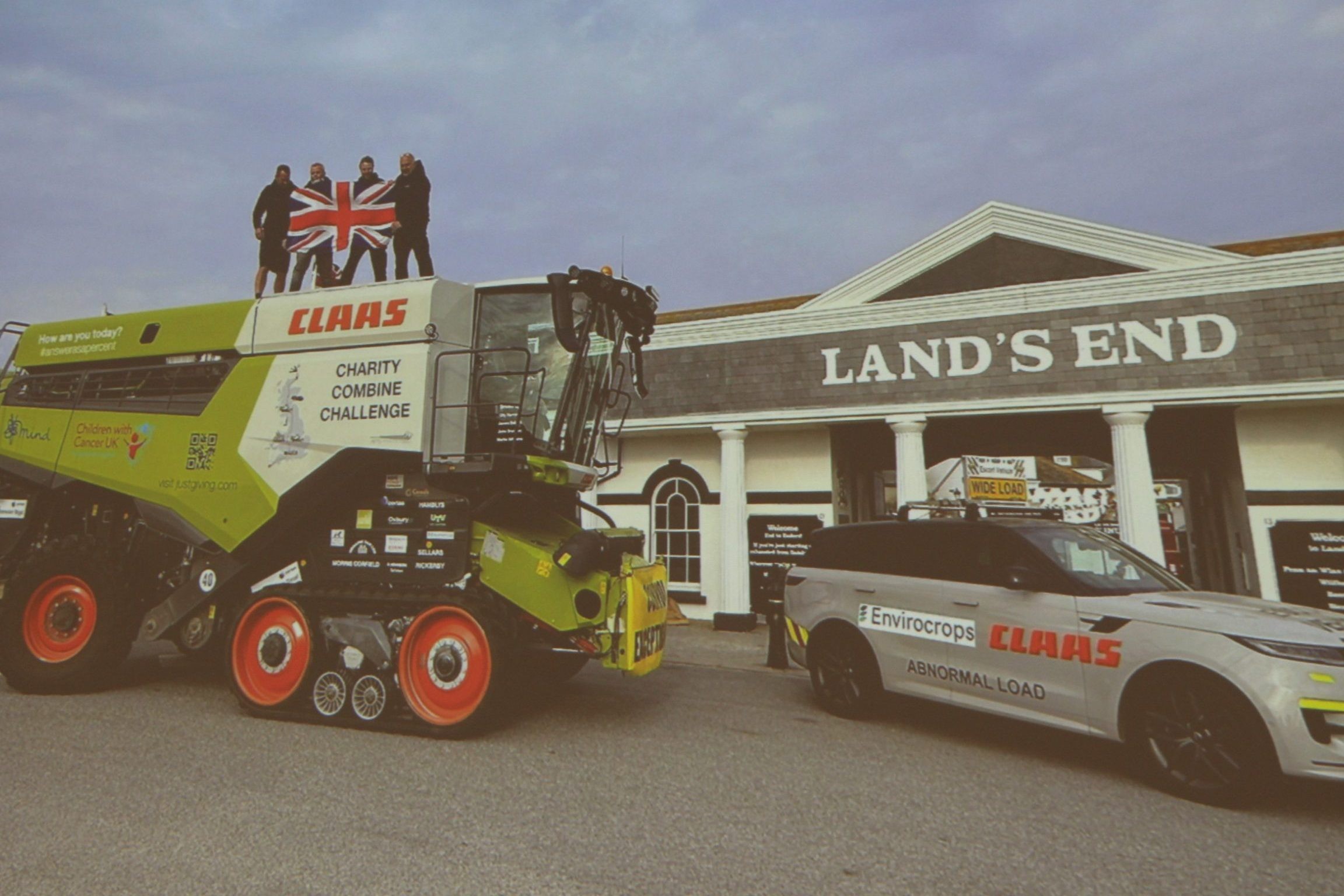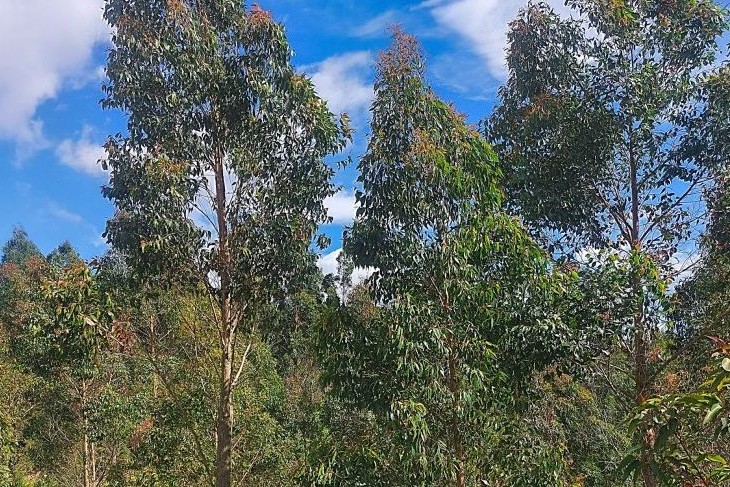A winning formula
Breeding and feeding. That’s the motto at Damien Humphrey’s Manawatu beef cattle trading operation. Farming in conjunction with his father on a second nearby farm, Damien is finishing up to 1400 R2 heifers annually. Rebecca Greaves visited him. Photo by Brad Hanson.
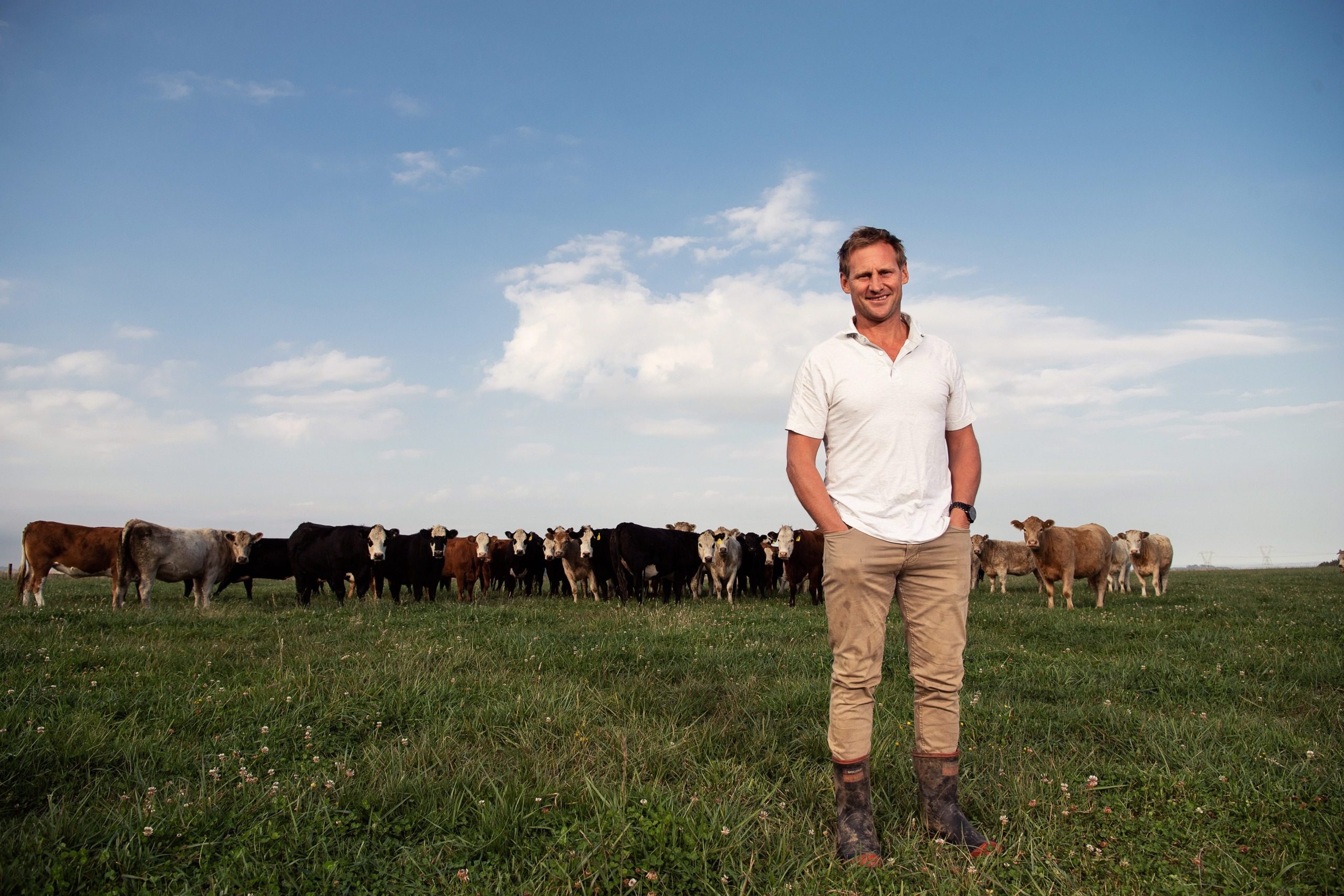
Breeding and feeding. That’s the motto at Damien Humphrey’s Manawatu beef cattle trading operation. Farming in conjunction with his father on a second nearby farm, Damien is finishing up to 1400 R2 heifers annually. Rebecca Greaves visited him. Photo by Brad Hanson.
Open to new ideas and willing to experiment, Damien Humphrey is mindful that the way they farm and its impact on the environment will have to change.
He’s already taking steps to find a way that is kinder on the environment, his staff, and can still be financially viable.
Damien, 40, and his wife Jaimie, who is an accountant, farm 180 hectares near Kiwitea, Manawatu. The majority of the business is beef cattle trading, though there is a small lamb finishing component. Damien grows processing peas for McCains too.
Just 7km down the road, Damien’s parents Ross and Wendy run the second farm. Although they trade as the same entity, the two properties are managed separately. This works well, Damien says, they farm together, while having their own space.
Cattle are the main focus on Damien’s farm, but he stresses that sheep are of key importance to the overall business, with the family’s Brookfield Romney Stud located in Taihape.
Cattle are bought in winter and finished in the summer and autumn. The cattle come in as R2 and the goal is for them all to be gone as R3 by the end of autumn.
Cattle are bought in during June, July and August.
Over the last three years cattle have wintered on precision planted swedes, grass silage and supplementary pea hay (a byproduct from the processing peas). Silage was cut onfarm in spring – everything is inhouse – and stacked at each end of the paddock.
“It was cheap as we weren’t moving anything, just feeding under a wire, ad-lib. It was amazing but extremely hard on the ground and the people, moving tyres from the pit,” Damien says.
This year, in a bid to get away from the silage pits, for the first time they are trying standing hay/standing grass alongside the swedes. Cattle will get a fresh break of swedes and grass daily, as well as pea hay.
“It’s for environmental reasons and wanting to make life easier for ourselves.”
They are trying to get the same volume of grass standing and half the amount of swedes for this winter.
“It does mean we’re dialling back on the amount of cattle we will be able to physically winter as we’ll be using so much more area to winter the cattle on.”
Cattle will be in the swede/standing grass wintering system until about the second week of September, when they move on to straight grass.
He says they plan to have enough grass behind them by then, as a rough rule.
Because they are high, about 400m above sea level, they usually don’t get any grass growth until September. The cattle are fed nothing but grass from September to March, when they are sold.
A lot depends on the buy-in weight. They target nothing under 380kg LW for buying in and the preference is for R2 heifers. The last three years cattle have averaged 0.6 to 0.7kg/ day weight gain over the wintering period.
“I don’t measure feed, everyone says I should, I do it old school and it seems to work. It’s solely down to the art of breeding and feeding.”
The general rule is to buy in an animal at 400kg, put 200kg on it and sell at 600kg. They don’t work off cents/kg DM, but on buy in and sell price to give them their margin.
“Things are always changing but we aim to get everything on board for under $1000.”
When it comes to what they buy they are fussy.
“Our motto is breeding and feeding, 50% being genetics and breeding, 50% what you put in.”
They would rather buy quality than work off a buying price.
Damien says that’s what they have learned from seeing the performance of genetics their sheep stud, it flows through to beef too.
“If you buy from well-known farmers using good genetics you see the gains.”
Damien admits that when running large numbers he can’t always get the right breed at the right price, but that’s the gold standard scenario.
He says the best cattle to buy are an Angus first cross. He prefers heifers as he finds them easier to manage, but will buy steers if he has to.
The right animal is one thing, then it’s up to how well you feed them.
Their philosophy is buy good stock, put weight on as cheaply as possible and kill them.
“I don’t measure feed, everyone says I should, I do it old school and it seems to work.
“It’s solely down to the art of breeding and feeding.”
Damien targets finishing 1000 animals a year though in good seasons it can be up to 1400. About 80% of the cattle are exported, while the balance go to local trade.
“For local trade you need heifers.
“I think people worry about the grading with heifers but I find if you buy the right stock you don’t have any grading issues.”
Ross has always been a staunch AFFCO supporter, Damien says, and the family has a 100% supply contract with AFFCO. In times when the pressure comes on, like drought, they have been great. There’s no lag in time to get stock away when everyone is trying to kill.
“They’re good to us and we’re good to them, it’s a good relationship.”
Farm facts
Kiwitea, Manawatu
• 180ha
• Annual rainfall: 1000-1200mm
• Predominantly Kiwitea silt loam soils
• Contour: Majority flat, balance easy hill (90% croppable)
• 1000-1400 R2 heifers finished annually
• 600-700 mixed sex lambs finished annually
• Processing peas grown for McCains each year.
Cropping regime
Damien grows processing peas for McCains annually and this is his only cash crop. Peas are planted in paddocks the cattle have wintered on, or any older pastures that aren’t performing.
Peas are planted in November and are in for three months, before the paddock is put back into pasture. Damien is a fan of tall fescue grass and says 80% of the farm’s pastures are now in it.
“This soil type is bad for grass grub. I was sick of pouring on chemicals to get rid of it and thought there had to be a better way. “
About 80% of the farm is in a tall fescue/ red clover mix. They still have grass grub but not as severe.
The tall fescue is also quite drought tolerant but can’t be grazed too hard, it does like to be rotationally grazed.
“In summer on hot days it just keeps growing.” Everything is on a seven-year rotation. A paddock is in grass for seven years, winters cattle, goes into peas and then back into grass.
With peas the income can be really high, and really low. The key is it’s only in the ground for a short time and is easy on the ground.
”Peas are a legume fixing free N for you and we have the byproduct of pea hay that we feed out. It’s organic matter being poured back into the ground.”
He says the stock enjoy the pea hay and do extremely well on it. With the peas gone by February there is a four-week window to get the paddock back into grass before rain hopefully comes at the end of March.
The swedes are precision planted in rows. Damien likes swedes because everything is below the wire and all it requires is someone to shift the break.
“We trialled planting our own swedes at lower rates, but the yield from the precision planting blows everything else away.”
They have tried kale previously and thought about the idea of fodder beet, but swedes are far cheaper and he doesn’t have any animal health issues.
“The thing with the wintering, it’s getting harder and harder to have such a concentration of cattle in a small area. Environmentally we’ve got to figure out ways to be easier on the land. That’s why we’re trying the standing grass, and half the stocking rate.
“We either have to experiment with buying dearer stock in the spring or cropping more maybe. Having this type of land gives up flexibility. It’s an experiment, nothing ventured, nothing gained. That’s farming – I’m trying to be ahead of the eight ball.”
No animal health costs
Damien does not treat the cattle at all.“The cattle are three quarters organic basically.”
They come off the truck, get fed a diet of swedes and grass, come back in and get weighed once. The heaviest go on the truck and the lightest go back on grass.
Family ties
Damien is the third generation of his family to work this land, having grown up on the farm, and he counts himself lucky. He has been managing the farm since 2014 when he returned from overseas.
“Dad is still super active, so we’re lucky to have the two farms. We can farm together, but with space. He has sheep at his place so I’m there a lot helping, 80% of the work would be down there.
“I’m pretty lucky. It’s a privilege to be farming – it’s hard to get into farming now. I love it. I grew up driving utes and backing trailers, it’s in the blood.”
He never had any doubt he’d end up on the home farm, though his father took some convincing after Damien did a few stints building in Australia, Wellington and the UK in between farming jobs. He reasoned that if he was going to devote 40-odd years of his life to the farm, he’d quite like to see a bit of the world first.
Both farms at Kiwitea (about 1000 acres in total) are predominantly beef and cropping. The Romney stud ewe flock is located in Taihape with Mike and Vicky Cottrell. After weaning, lambs come to Kiwitea, those that make the cut genetics-wise, about 500 ewe hoggets, stay on at Ross’s property to be mated and lambed, before returning to the hills as 2ths.
The rams also spend three months at Kiwitea, prior to selling onfarm.
“About 15 years ago dad decided to shift the stud to hill country. It’s a share farming arrangement with the Cottrells, they own the land and we own the ewes, and it works extremely well for us. As breeders we need to be breeding sheep off hill country to go back on to hill country. Back in the day this road was called ‘ram alley’ now it’s all finishing.”
The move changed the stud dramatically, Damien says, and it has been a positive one. “It’s really turned the sheep into little hill country nuggets.”
Whatever lambs are not considered good enough to go back into the stud flock are sent to Damien’s farm and finished. He finishes 600 to 700 mixed sex lambs annually.
“The hard core part of the business is beef and, since we shifted the ewe flock we got led to trading beef.”
Rotational grazing
Damien likes to rotationally graze his farm. He has big mobs of cattle, 100 plus, which are moved every two to three days for a fresh pick, depending on covers.
“I’ve always loved the concept of how dairy farms work and how simple it is to measure how much grass they have.”
He likes it because he can visually see how much grass he’s growing.
“I use my eye and believe you grow more grass by rotationally grazing.”
An eye to the future
While Damien admits he’s very traditional in some ways, he doesn’t budget and measures pasture by eye, he is also keen to learn new things and try them out on-farm.
He’s taken an interest in regenerative agriculture and, while it’s not all for him, there are some principles he’s keen to adopt, such as incorporating a wider variety of plant species and more legumes.
Although he’s not officially organic either, there’s no fertiliser or spraying on the farm. Weeds in crops are controlled through repeated mowing, and he’s given grass grub a good knock by using tall fescue.
Damien’s ultimate dream is to move to a system where the farm is finishing cattle 12 months of the year, rather than relying on buying during a three-month window and intensive wintering. He feels it is the future for the soils, stock and the people.
In the back of his mind he knows the almost completely flat farm could have other uses, and he doesn’t rule that out. The beauty of the farm is it affords flexibility.

